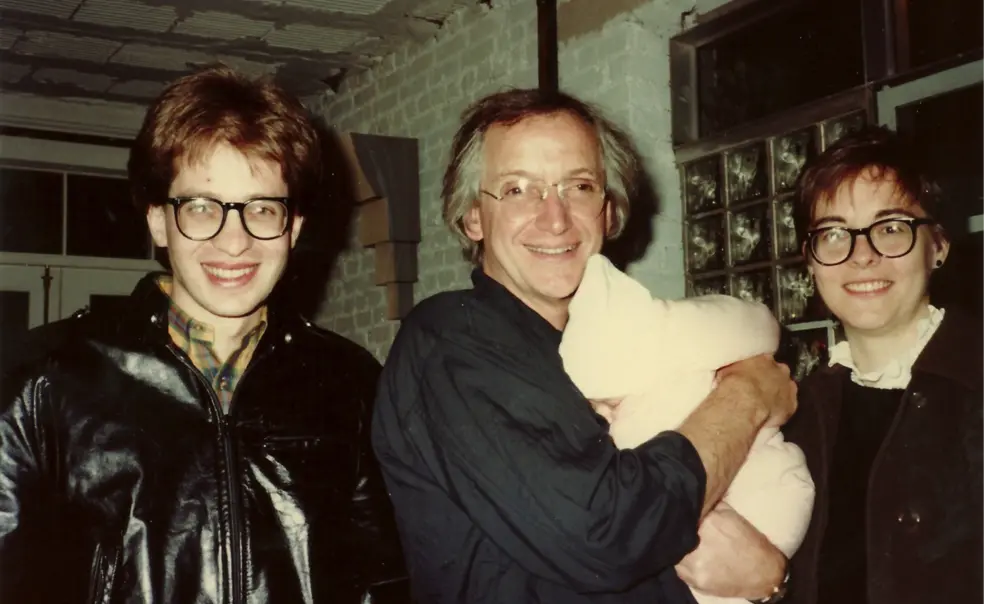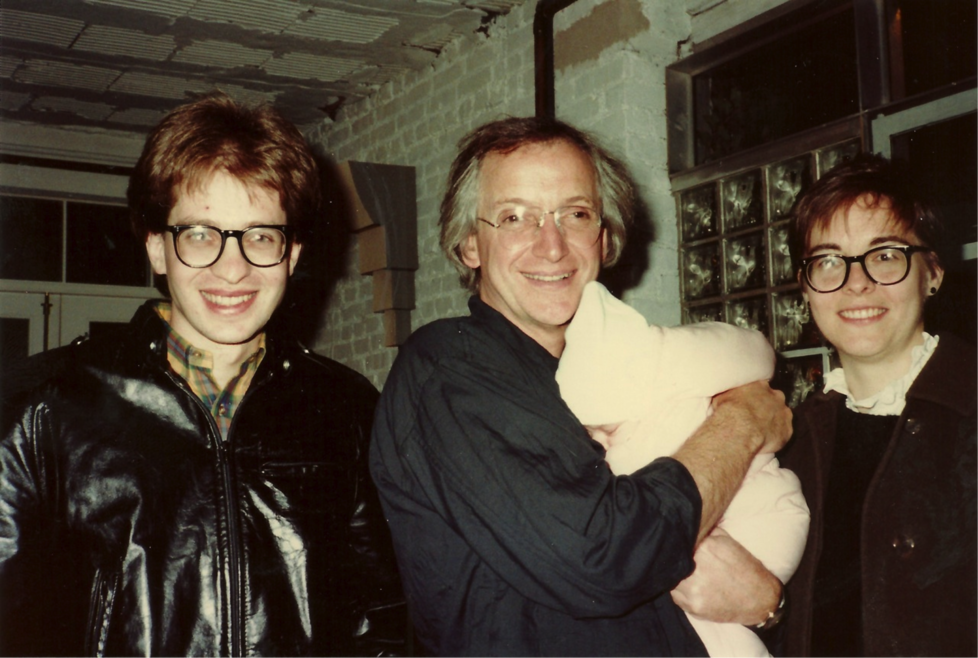Cynthia Phifer Kracauer ’75 *79, AIA, managing director of the Center for Architecture in New York, submitted this remembrance to PAW in March.
A few days have gone by since I heard of Michael Graves’ death. There has been wide coverage in the general media — spots on TV shows and a front page obit in The New York Times. I posted my own photographic tribute on my maiden-name Facebook page: a picture I took last year of the wheelchair-bound architect, with my also-architect husband Benjamin Kracauer, at Philip Johnson’s Glass House in New Canaan, Conn.
As a Princeton architecture student in the 1970’s (almost the entire decade — 1971-79) I was Graves’ student in design studio, repeatedly took his Visual Studies class, and had him on reviews. Five Architects was well thumbed, Peter Eisenman showed up for Michael’s juries. The Institute — not the American Institute of Architects but rather the Institute for Architecture and Urban Studies — was a mecca for internships with Peter, Rem Koolhaas, and a host of others making their own mayhem in New York. Oppositions came out regularly: a platform for an academic discourse on architecture and planning that may have singlehandedly invented its own private language through appropriation of critical thought from the other more verbal disciplines of literature, philosophy and history. And I was a Navy-brat-public-school kid from Los Angeles, transplanted by ambition to the recently co-educated ivy halls.
The School of Architecture and Urban Planning, as it was called then, had a magical attraction. Its students were believers, dedicated to all-night studio charrettes, a collective esprit not found in the individuated carrels of Firestone Library. And you could talk all the time. There were factions on the faculty — a dean who believed in the importance of social factors in design, geezers still teaching ink washes in the beaux-arts style (thank goodness!), and young luminaries: Graves, Peter Waldman, Tony Vidler, Diana Agrest, Harrison Fraker and others, presciently assembled junior faculty, even a woman!
Michael was the attraction for the school. Young, attractive, almost famous, like a rock star at the cusp of playing stadiums, but still in the small clubs, developing a following. But he was first and foremost a teacher, and for me at least, a very good one. He taught me to see — everything from Depression-era measuring cups and eggbeaters he collected at the Englishtown Fleamarket to Cezanne, the architecture of Borromini, and the gardens of the Villa Lante. I learned the history of architecture as a prologue to the design enterprise. I learned to draw and color as a form of self-expression, and as a way in to the thinking about architecture.
Later on, Michael became very famous. He turned his obsession with domestic physical culture into an empire of easy-grip adorable appliances for Alessi, Target, and other purveyors of Everyman’s stuff. His architecture was forever exploring, not afraid to be figural. He was never an angry Modernist razoring his contexts. The unwholesome elites moved on to expanded mesh and jagged gashing in their environments both civic and suburban. Michael stayed in Princeton. He kept teaching.
The ratio of students to faculty favored relationships, and the intimacy of the studio spawned enduring ones. In my M.Arch class (1979) six students married each other. Michael was generous with his time. We were invited to his permanently under-construction Warehouse — at that point quite raw, later the stuff of Architectural Digest. He mentored us, helped us find jobs with others. If we needed recommendations for teaching positions, they were so glowing we had to live up to the hype, justifying his confidence in us with our own effort.
When I talk to others in the profession, I hear different stories. Some recall being ignored. Others say they were somehow damaged. One classmate mentioned the movie Whiplash when I brought up the topic of Graves’s teaching. That is not what I remember. I remember the moments of discovery, gently prodded to a decent organizational structure for my Cenotaph for Albert Einstein. I recall his beautiful squiggles on yellow trace still rolled up with my rather lame Villa Snellman addition.
He gave his blessing to another creation that came out of that studio: our daughter Emily — as if he was the architectural grandfather to our first child.
READ MORE: Michael Graves: John DaSilva ’85 salutes an influential teacher













No responses yet